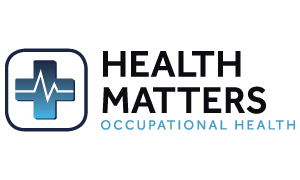
This week is Road Safety Week and is an ideal opportunity to consider the risks posed to employees who drive for work and a chance to ensure they are all fit and well enough to drive!
Health & Safety Laws for Drivers
Health and Safety laws apply to employees who are required to drive for work in the same way if they worked in an office or on site. This applies to those who drive cars for work but also for those who ride a motorcycle or bicycle, and also for those employees who use their own vehicle for work-related journeys. It’s important to note however that Health and Safety law does not apply to employees who are driving to/from their normal place of work, unless they are travelling from their home to somewhere that is not their normal workplace.
As part of a company health and safety policy, the risks to drivers need to be managed. Effective management of work-related road safety helps to ensure risks are reduced and can also be beneficial because:
- Drivers sustain fewer injuries
- Work related ill health is reduced
- Stress is reduced and morale can be improved
The Health and Safety at Work Act 1974 advises employers must ensure the health & safety of all employees as far as reasonably possible at work, and others are not put at risk by work-related driving activities. It’s important that a risk assessment is carried out to determine the risks faced by employees. A risk assessment for any work-related driving activity should follow the same principles for any other work activity and should include consideration of what might cause harm, the people who might be affected, the chance of this happening and should identify any controls currently in place and what, if any, further controls are required.
Driver Medicals
It is estimated that more than a quarter of all road traffic accidents involves someone who is driving for work. There are 2 levels of medical standards that relates to fitness to drive and these are:
Group 1- Holders of standard driving licence for social driving
Group 2- Heavy goods vehicle (HSV) and public service vehicle licence holders
Research has shown that people who drive for work purposes are at increased risk of causing or being in a road traffic collision. Risk also increases with the number of miles driven; in general, social drivers are considered to be on the road for 5% of their lifetime while commercial drivers for about 25%. Commercial drivers also have no control over where, when and how long they drive for; they are at the mercy of the work instructions.
Employers have a duty to ensure that staff are fit for work, including driving and where necessary to arrange periodic health surveillance. Drivers themselves are also responsible for ensuring they do not drive then they aren’t fit to do so and they report anything that may affect their driving ability to their employer and the DVLA if necessary.
When an employer is making the decision to introduce driver medicals, it should be based on the risk assessment of the driving activity. A Group 1 Driver medical may be sufficient for drivers who are faced with no additional hazards other than driving itself, however group 2 driver medicals should be considered when driving involves:
- Moving highly toxic or explosive materials
- Working in a particularly demanding environment
- Working at night
- Operating large, heavy vehicles
In order to be deemed safe to drive, a driver must have:
- Effective and reliable control of the vehicle
- The capacity to respond to other traffic, pedestrians and emergency situations
- Knowledge of, and a willingness to follow, workplace or road rules
Driving performance can be affected by certain health problems. Vision is certainly the main sensory element required to drive safely, however any medical condition that impairs perception, awareness and responses has the potential to compromise the ability to drive safely. Driving ability can also be affected by:
- General alertness and factors that influence this e.g tiredness, alcohol, drugs
- The drivers’ mood and other activities taking place in the vehicle e.g. distractions by passengers, mobile phone use, consuming food and drinks
- The ageing process which can result in poor eyesight and an increase in the frequency of health problems
- For these reasons, it is considered prudent to refer to the Group 2 DVLA medical standards for driving when considering fitness to drive for work.
Do your employees need driver medicals?
It is imperative that your employees who drive for work are fit and well to do so, especially if they undertaking safety-critical tasks such as driving forklift trucks, operating plant and machinery or driving HGVs. A worker may well struggle on with a medical condition without realising its potential impact on their own health and the health of others around them and proper screening can help highlight and address situations such as these.


